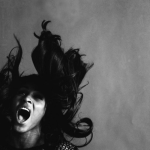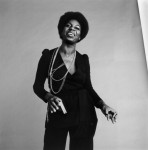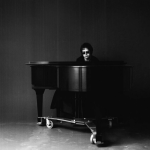September 18, 1928 – December 15, 1997
It is always unclear what people are hiding in their homes, but when Jack Robinson’s boss Dan Oppenheimer was left to take care of his estate when he passed, he discovered a hidden world that Robinson had kept secret. He found a vast collection of pristine portraits of iconic celebrities that Robinson had photographed in his early days as a commercial photographer for Vogue. Oppenheimer knew that Robinson had been a photographer in an earlier chapter of his life but he rarely spoke of it.
Amazingly enough Robinson had acquired over 150,000 prints of famous ’50s, ’60s and ’70s icons ranging from Joni Mitchell, Jack Nicholson to The Who before falling victim to alcoholism and moving to Memphis, leaving that life behind. Oppenheimer, who had been Robinson’s boss at a stained-glass studio in Memphis, recalls that Robinson kept mostly to himself and had very few friends. Sadly few people even knew he had died, which might of explain why Oppenheimer found himself in this position to begin with: There was no one else to take care of the belongings that were left behind.
What Oppenheimer did find when he opened the doors was an immaculately tidy apartment with exactly one of everything: One plate, one bowl, one mug. Robinson only wore white shirts and jeans, Oppenheimer says, and his spare white buttons were meticulously organized by size. A few cameras were in a display case. Then he opened the closet. “I opened this one box, and stacked down to the bottom was Elton John, Joni Mitchell, Jack Nicholson, The Who. It became very obvious that this was no ordinary photographer.”
Ever since Robinson’s death in 1997, Oppenheimer has been piecing together the photographer’s life — cataloging and publicizing the photos, managing what is now the Jack Robinson Archive. And after more than a decade, a preview of Robinson’s work can be seen in the book Jack Robinson On Show: Portraits 1958-72. The introduction gives more context: Robinson was convinced by an art dealer to leave the bohemia of New Orleans, where he had moved for college, to pursue a photography career in New York. After some time, he got a foot in the door of Vogue, where “his skill as a portraitist attracted many renowned sitters.”
The career lasted 17 years before Robinson came undone and moved to Memphis. There, he sobered up and took a job as a stained-glass designer. By the time Oppenheimer met him, New York City, photography and alcoholism had all been buried in the past. And there’s really no one who knows much more. “I kept waiting for some family member to step forward and make arrangements, and to this day no one has stepped forward.” Robinson, it seems, left everything to Oppenheimer on purpose — knowing it would be in good hands.
“I wouldn’t have known what Tom Wolfe looked like 45 years ago but I knew the name. It overwhelms people to this day to see all of the icons of your youth … to see all of these people when they’re 20 years old.”
Information: NPR & Jack Robinson Archive













